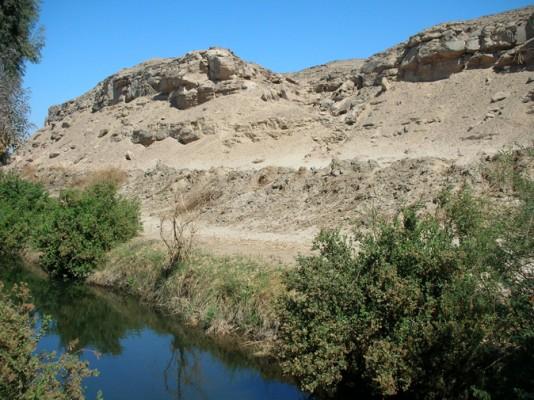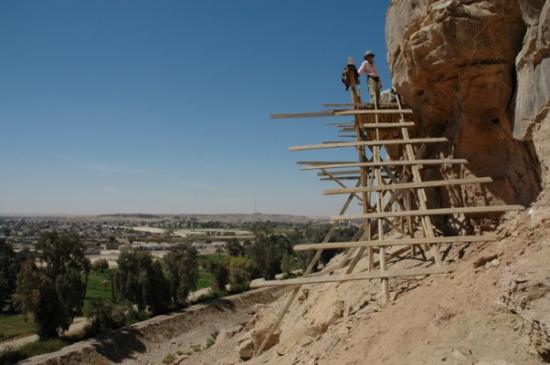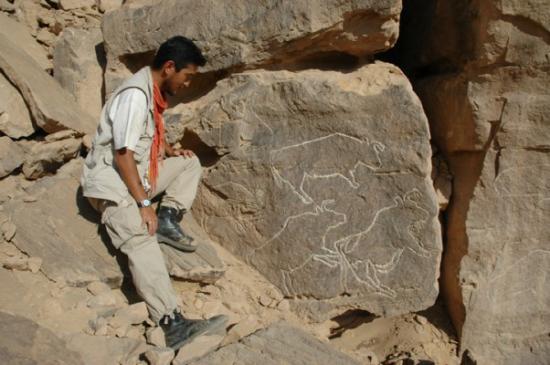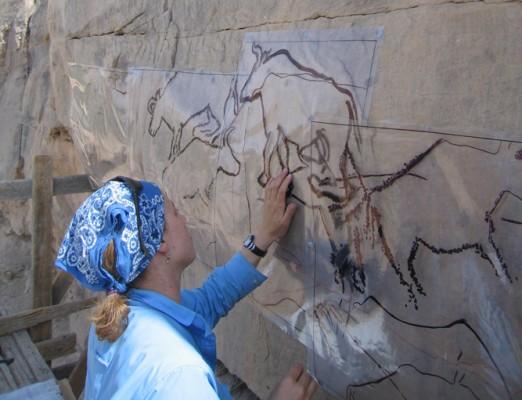Oldest rock art in Egypt discovered
Dorie Baker
Source - http://news.yale.edu/2011/11/10/oldest-rock-art-egypt-discovered

The Qurta I site is situated along a small canal. The scaffolding high up the hillslope indicates the location of the main rock art panel (© RMAH, Brussels)
Using a new technology known as optically stimulated luminescence (OSL), a team of Belgian scientists and Professor John Coleman Darnell of Yale have determined that Egyptian petroglyphs found at the east bank of the Nile are about 15,000 years old, making them the oldest rock art in Egypt and possibly the earliest known graphic record in North Africa.
The dating results will be published in the December issue of Antiquity (Vol. 85 Issue 330, pp. 1184–1193).
The site of the rock art panels is near the modern village of Qurta, about 40km south of the Upper-Egyptian town of Edfu. First seen by Canadian archaeologists in the early 1960s, they were subsequently forgotten and relocated by the Belgian mission in 2005. The rediscovery was announced in the Project Gallery of Antiquity in 2007.

Wooden scaffolding constructed in February 2007 to allow access to the rock art at the Qurta I site. The northern edge of the Kom Ombo Plain with the village of Qurta is in the background. The Nile runs right behind the large hill in the far distance (© RMAH, Brussels)
The rock art at Qurta is characterized by hammered and incised naturalistic-style images of aurochs and other wild animals. On the basis of their intrinsic characteristics (subject matter, technique, and style), their patina and degree of weathering, as well as the archaeological and geomorphological context, these petroglyphs have been attributed to the late Pleistocene era, specifically to the late Palaeolithic period (roughly 23,000 to 11,000 ago). This makes them more or less contemporary with European art from the last Ice Age — such as the wall-paintings of Lascaux and Altamira caves.

Belgian archaeologist Wouter Claes poses with a panel with wild bovids (Bos primigenius or aurochs) at the Qurta II site. (© RMAH, Brussels)
“The palaeolithic rock art at Qurta reveals that the well-known cave art of the late Pleistocene in Europe was not an isolated phenomenon. Qurta puts North Africa firmly in the world of the earliest surviving artistic tradition, and shows that tradition to have been geographically more wide-spread than heretofore imagined,” commented Darnell, professor of Egyptology.
The authors of the study note that while archaeologists generally did not dispute the estimated age of the images, proof in the form of indirect or direct science-based dating had hitherto been lacking.

American archaeologist Elyssa Figari recording rock art at the Qurta I site. The panel contains 33 images, including 25 wild bovids and a stylized human figure (© RMAH, Brussels)
PART. 2